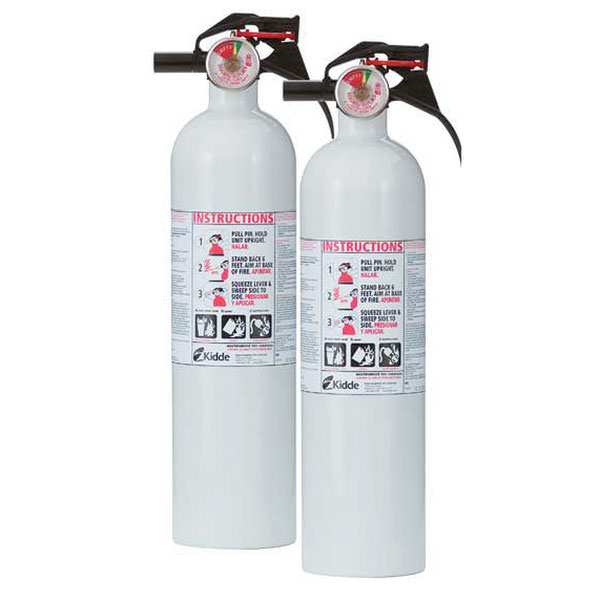An uncontrolled fire is one of the most frightening and devastating things that can happen on a boat. An onboard fire can double in size every 7 seconds, so having the right extinguisher in the right place can make the difference between a problem and a catastrophe.
All fire extinguishers are classified by a letter and a Roman numeral. The letter indicates the type of fire (A, B, C or D) it is designed to extinguish. The numeral (I, II, III, IV or V) indicates the size of the extinguisher. The higher the numeral is, the larger the extinguisher will be. Sizes I and II are portable by hand, and sizes III, IV and V are semiportable.
Class A extinguishers are designed to fight fires that leave an Ash. This includes ordinary combustibles such as wood, paper, cloth, trash, and many plastics including the fiberglass reinforced plastic used for decks and hulls The best extinguishing agents for an A fire are water or chemical foam.
Class B fires Boil. They involve flammable or combustible liquids such as stove alcohol, grease, gasoline, diesel, kerosene, oil, oil based paint, teak oil, paint thinners, acetone, and varnishes. The best extinguishing agents for a B fire are carbon dioxide, dry chemical or aqueous film-forming foam (AFFF).
Class C fires involve a Charge from energized electrical equipment, and have the potential to electrocute or shock a person if you apply water-based extinguishing agents. Turning off the electricity is the top priority when fighting a Class C fire. Cutting the power will change the status of a Class C fire to a Class A and/or B fire. The best extinguishing agent is carbon dioxide. Dry chemical can be used.
Every boat should carry at least one extinguisher capable of putting out a class A, B or C fire (ABC extinguisher). The Coast Guard requires that all extinguishers used on boats must be U.S. Coast Guard-approved and rated for marine use. Boats that are less than 26 feet long must have at least one B-I extinguisher in place; boats 26 to 40 feet must have two of these. Boats larger than 40 feet but less than 65 feet must have three.
Once you’ve purchased an extinguisher, take the time to read the instructions that come in the box. You might be surprised to learn what it can and can’t do. If you have one that is no longer fully charged, fire it off in a safe spot to learn how to use it. On board, we recommend at least one in the cockpit, one in each stateroom and one in the galley area, reachable even if the stove is on fire.
